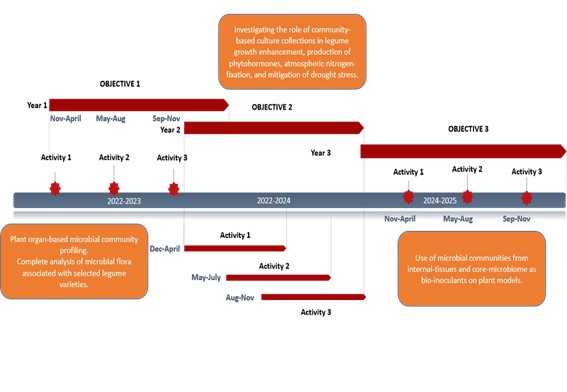PERSONAL INFORMATION
Postdoctoral Researcher at UPNA
Researchgate: https://www.researchgate.net/profile/Izzah-Shahid
ORCID: https://orcid.org/0000-0001-7046-807X
Email: izzahshahid@ymail.com
LinkedIn: https://www.linkedin.com/in/izzah-shahid-144911160/
Facebook: https://web.facebook.com/eza.shahid

DESCRIPTION OF THE PROJECT
Changing landscape, rapid urbanization, loss of the available agriculture land, challenged fresh-water reservoirs, biotic and abiotic stresses, and mounting costs of chemical fertilizers significantly impact global legumes productivity. Yield losses because of widespread fungal and bacterial pathogens, toxins, droughts, and insect damage are most common, and one of the economically feasible approaches to counter these damages is to get benefit from plethora of plant-growth promoting bacteria (PGPB). Therefore, the development of new approaches to decipher microbial ecology data, their assemblage and abundance, organ-diversity of microbes is inevitable and can unravel the novel mechanisms of successful plant-microbe interactions. The proposed research project aims to identify organ distribution, abundance, specific assemblages, coping mechanisms to fight stress and diseases, of microbial communities associated with legumes. Microbial community profiling based upon their abundance and localization in leguminous plants will be performed using culture-dependent and culture-independent approaches. Closely localized microbial cultures forming communities will be assessed for the production of phytohormones, atmospheric nitrogen-fixation, solubilization of insoluble minerals, and the ability to mitigate abiotic stresses. The community-based culture collection (CBC) will be used to design designed a synthetic community comprised of naturally occurring highly abundant bacterial groups from roots and stalks. Leguminous plants will be used as the model to probe the abundance-based synthetic inoculants. This will help to recover unexplored and silent microbiota from leguminous plants to mitigate the hazards of abiotic stress and would increase the atmospheric-nitrogen fixation with disturbing the ecological balance of nitrogen cycle.



